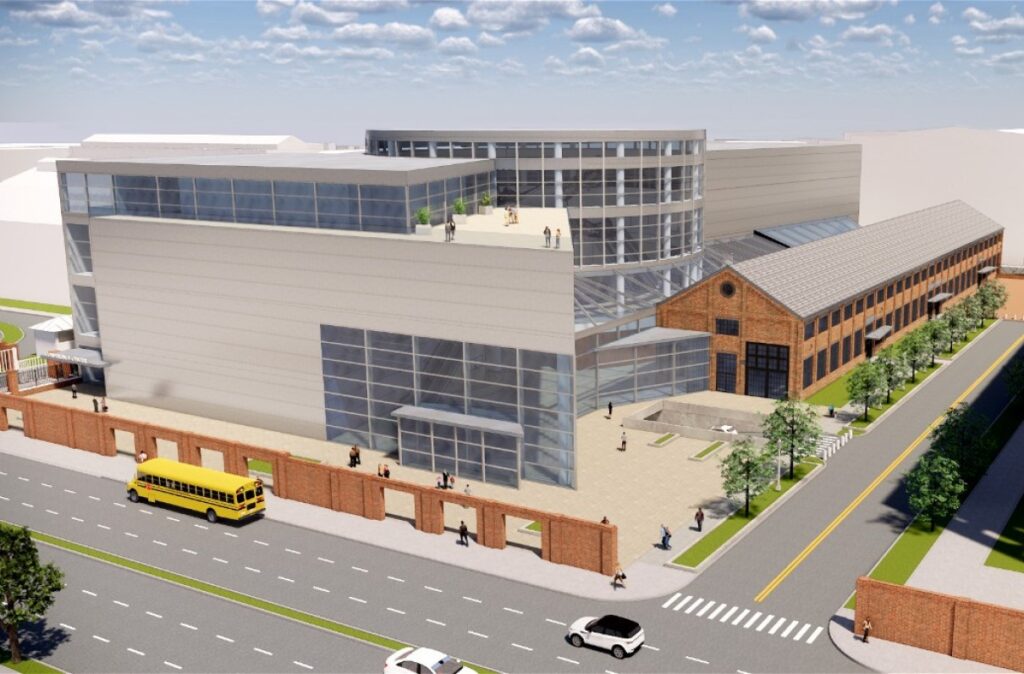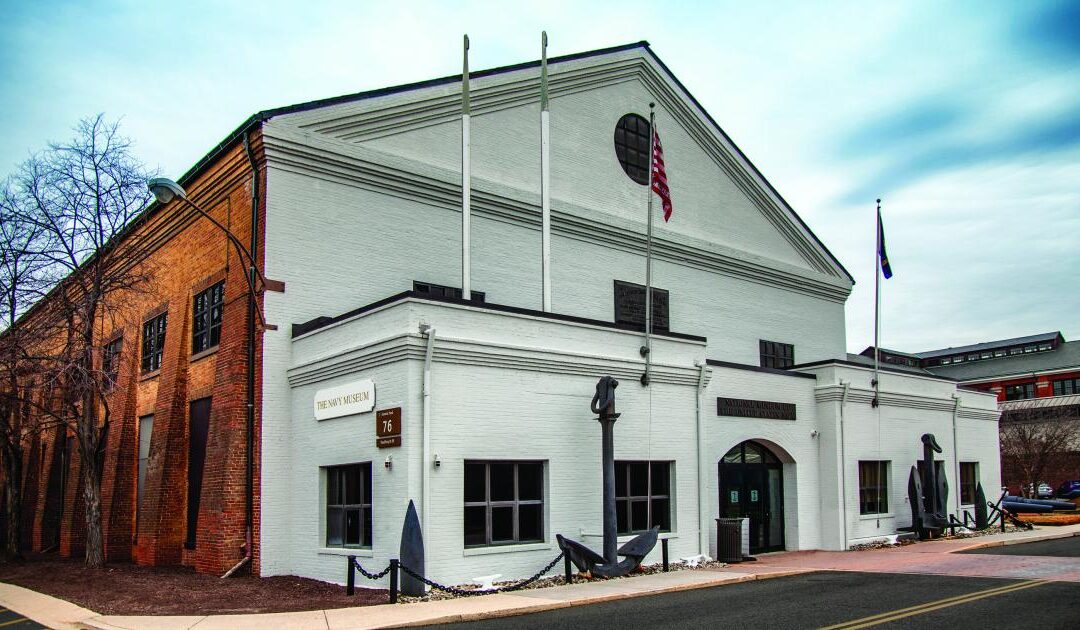The National Museum of the U.S. Navy collects, preserves, displays, and interprets historic naval artifacts and artwork to inform, educate, and inspire naval personnel and the general public.
The National Museum of the U.S. Navy was established in 1961 and opened to the public in 1963. As one of 10 Navy museums throughout the country, it is the only one that presents an overview of U.S. naval history. Permanent and temporary exhibitions commemorate the Navy’s wartime heroes and battles as well as its peacetime contributions in exploration, diplomacy, navigation and humanitarian service.
Known for 40 years as the flagship museum of the U.S. Navy, The National Museum of the U.S. Navy celebrates a legacy of educating the public. In the tradition of its predecessors on the Washington Navy Yard beginning in 1865, the current museum features a collection that dates from 1800. The museum’s collection moved twice before Admiral Arleigh Burke established the current museum, Building 76, in 1963 to create an American naval history museum comparable to those in Europe. The National Museum of the U.S. Navy continues to embody Burke’s vision of sharing the Navy’s history and traditions with the world.
The tradition of collecting naval artifacts and trophies in the United States began in the early nineteenth century under the command of Thomas Tingey, the first commandant of the Washington Navy Yard. The first artifact collected was a French gun, cast in 1793 at Lyons, captured during the Quasi-War with France, 1798-1801. From this modest beginning, the collection grew as the U.S. Navy fought in more battles and explored the high seas during the early years of the American republic.
As the Navy’s collection of artifacts grew, so did the need for a space in which to display them. In 1865, the former Paint Shop opened as the Museum of Naval Relics and Weapons where the Dispensary is today. This museum was amongst America’s earliest federal museums. Listed as one of Washington’s most popular tourist attractions in Morrison’s Strangers Guide to Washington, the collection impressed visitors with such artifacts as a gun from Spanish conquistador Hernan Cortes’s conquest of Mexico, and the sloop Kearsarge’s original sternpost containing a shell she received during her fight with the Confederate raider Alabama off the French coast.
In 1913 the museum’s artifacts moved to Building 120 where the museum shared space with the Seaman Gunner’s Quarters and the Recruiting Office. This site is now a parking lot west of the Washington Navy Yard. The building was demolished in 1927, which left the Navy’s collection of artifacts in storage for eight years. In April 1935, the third museum opened in building 40, at the north end of the Breech Mechanism Shop constructed between 1887 and 1899. When World War II ended the yard officially changed its name to the Naval Gun Factory, so the museum became the Naval Gun Factory Museum. After gun production ceased, Admiral Burke obtained the entire building in 1961 to house a new, and more complete collection of artifacts.
Today The National Museum of the U.S. Navy is the only naval museum to chronicle the history of the U.S. Navy from its creation to the present. Artifacts like USS Constitution’s fighting top, the world’s deepest diving submersible, Trieste, and the khaki uniform of former Fleet Admiral Chester W. Nimitz make The Navy Museum’s collection second to none.
More than 90,000 individuals visit The National Museum of the U.S. Navy annually. Admission to the Museum and its programs is free. The Museum is architecturally accessible.
The National Museum of the U.S. Navy is part of the Naval History & Heritage Command which includes a library, archives, and photographic and other research facilities.
The New National Museum of the U.S. Navy

Secretary of the Navy Kenneth J. Braithwaite announced on 13 October 2020 at the Washington Navy Yard that the U.S. Navy intends to build a new National Museum of the U.S. Navy.
The Navy is creating a new campus-style museum to honor the service of American Sailors and enhance the public understanding of our vibrant history and heritage.
Bring History to Life
An advanced campus design will enable the new NMUSN to celebrate 250 years of U.S. Navy history by using exhibits and educational programming to tell the stories of Sailors.
The new museum will:
- Bring to life the human experiences of serving in the U.S. Navy through interactive displays and 4D theater presentations.
- House and display icons of naval history, showcasing artifacts that pay tangible tribute to the service and sacrifice of our Sailors.
- Highlight the history and traditions of all U.S. Navy communities.
Provide Unfettered Access
While the current NMUSN is located inside the Washington Navy Yard, the new NMUSN will be a campus-style museum outside the Navy’s security perimeter—providing the public with unfettered access to U.S. Navy history.
- There will be no fee for visitors to the new NMUSN campus.
- While the specific location is not yet finalized, the ideal site for the new museum is in the vicinity of the historic Washington Navy Yard.
- The Navy is committed to working with the District of Columbia and other stakeholders through the necessary negotiations and environmental studies, and legislative actions that must be completed before a land deal is finalized.
Create an Enduring Memorial to Our History and Heritage
The new NMUSN campus will foster public understanding of the U.S. Navy’s rich history and proud heritage.
- New NMUSN exhibits will demonstrate to the American public the critical role the Navy has played—and continues to play—in the defense of our nation, conveying the importance of what maintaining a strong Navy means for the protection of freedom and commerce.
- The new NMUSN campus will serve as an educational, inspirational, cultural, and ceremonial center for those who have served, and who continue to serve, in the U.S. Navy.
- The museum will host notable career events for active, reserve, and retired personnel.
The new National Museum of the U.S. Navy will provide a tangible tribute to the service and sacrifice of our Sailors. The museum will be an advanced, campus design that will bring to life the human experiences of serving in the U.S. Navy, deliver leading-edge engagement to amplify Navy priorities and operations, showcase the history and heritage of all Navy communities, and create a memorial to our heritage and the service and sacrifice of American Sailors.
To learn more about the National Museum of the U.S. Navy, visit: https://bit.ly/3rKYjuL.

